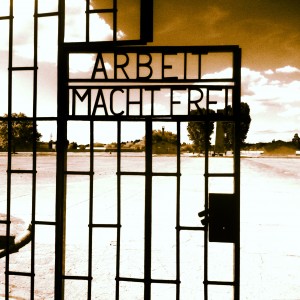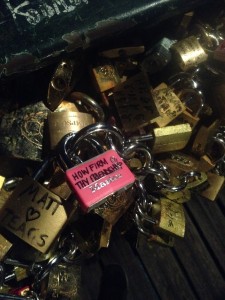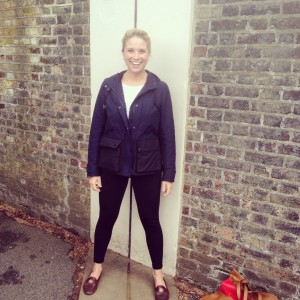Being in Berlin for only a few days, I have seen German culture represented by an overshadowing and juxtaposing figure and item: Hitler and hotdogs.
Our WWII tour of Germany began in the German Historical Museum, which was filled with the rich history of the three Reichs and the periods in between. Naturally, our group spent the most time in the section on the Third Reich, how it formed and how it ended. Yet in this section, there is little on the actual battles, logistics, and military movements of World War II. Rather, the rise and fall of the Third Reich, most especially Hitler, focuses on social and cultural aspects. Rooms were filled with propaganda posters discriminating against the Jews, Gypsies, and disabled, representations of and footage from concentration camps, and descriptions of life under Nazi regime. I was surprised to find that this is what Germany has chosen to focus on to represent the war. There was no hiding what happened from 1933 to 1945, nor was there a shameful taste to the exhibit; rather, it simply is part of their history.
As we made our way to the old Nazi and SS headquarters and the Topography of Terror Museum, it became clear that one cannot talk about German culture without talking about the Third Reich and World War II. The remnants of the war and the Nazi ideology underlie the architecture and organization of the city of Berlin. Throughout the city there are plaques describing buildings that were taken over by the Nazis and describe what they were turned into during the war and who took them over after. With every turn of a street corner, the rich, dark history of Germany can be found.
Hitler’s leftovers in Berlin are then coupled with endless stands of street meat, kebobs, currywurst, and hotdogs. If the Nazi regime fills history museums and buildings, German cuisine and meats fill the streets and restaurants surrounding the former. Our first day here we grabbed lunch at an open market near Wittenbergplatz. At the turn of the first corner, I laughed when I saw people eating hotdogs with their fingers and without a bun. This was exactly what I thought Germany to be like. And the nonexistent ratio of meat to bun was not an isolated incident. Walking the streets of Berlin, one can often find people eating bratwurst about 8 inches longer than the roll it’s in.
It has been amazing to see how a nation deals with such a dark and twisted past as they move forward in creating a peaceful, unified Europe. So far, our tour has been studying how other nations were affected by the war and how they remember it. Now in Germany, we focus on how the Germans responded to a change in culture and attitude during Hitler’s reign. Most specifically, it has been interesting to see how they acknowledge Hitler and the Third Reich today. I was surprised to find that Mein Kampf is illegal to print in Germany and that during a student’s education he or she must visit a concentration camp or a Nazi site. This shows that Germans accept their shadow of a past as part of their historical story.






